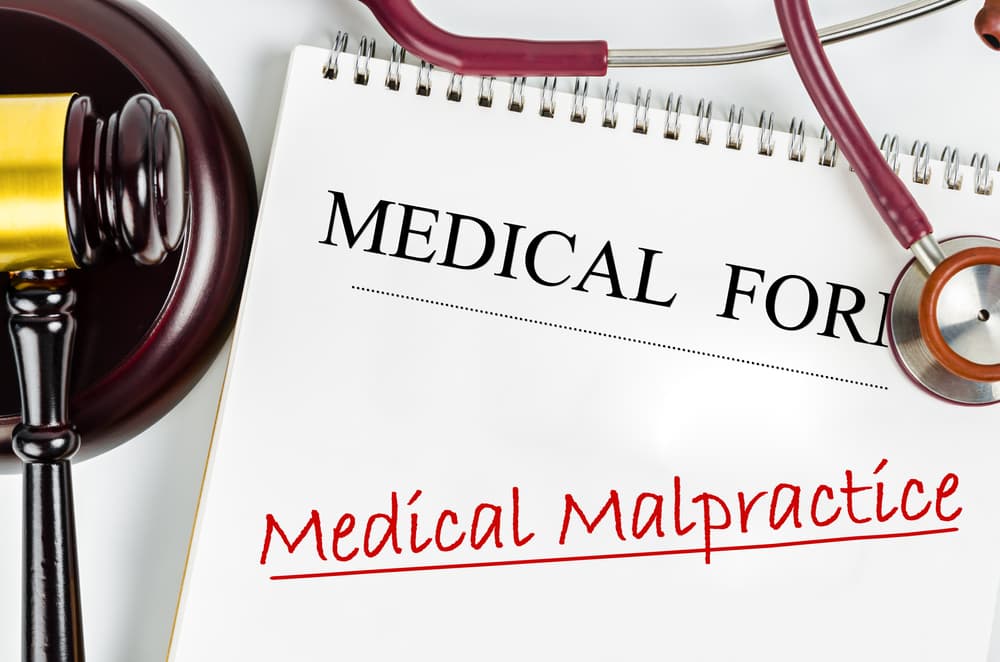Discovering that your child has cerebral palsy can evoke a whirlwind of emotions and questions. One of the first questions many parents ask is, "Was this the result of a preventable birth injury?" The answer: Usually, but not necessarily. If you suspect a birth injury may be responsible for your child's condition, it's crucial to consult with a birth injury lawyer who can provide legal guidance and support.
Schedule a Free Initial Consultation Today!
What Is Cerebral Palsy?
Cerebral palsy is a neurological disorder that affects movement, muscle tone, and posture. It results from damage to or abnormalities inside the developing brain that disrupt its ability to control movement, posture, and balance.

The condition can result from lack of oxygen during birth, infections, and traumatic brain injuries in early life stages. While the exact cause of the brain damage can vary, the outcome often manifests as a lifelong physical disability.
There are several different types of cerebral palsy.
The following classifications allow medical professionals to tailor treatment plans for cerebral palsy patients so they receive the appropriate care and support throughout their lives:
- Spastic Cerebral Palsy: Spastic cerebral palsy is the most common form of the disorder. Patients with this type have increased muscle tone, leading to stiff muscles and awkward movements. There are three main subtypes of spastic cerebral palsy. Diplegia, which predominantly affects the legs; hemiplegia, which affects one side of the body; and quadriplegia, which affects all four limbs, often along with the trunk and face.
- Dyskinetic (or Athetoid) Cerebral Palsy: Patients with this type of cerebral palsy experience involuntary movements. It's difficult for many individuals with dyskinetic cerebral palsy to control their hands, arms, feet, and legs, making purposeful movements challenging.
- Ataxic Cerebral Palsy: This form affects an individual's balance and coordination. People with ataxic cerebral palsy might walk with an unsteady gait and have difficulty with precise movements, like writing.
- Mixed Cerebral Palsy: Some patients exhibit symptoms of more than one type of cerebral palsy. The most common combination typically involves spastic and dyskinetic cerebral palsy.
How Common Is Cerebral Palsy?
According to a statistical summary from researchers at Emory University and the University of Miami:
- Cerebral palsy is the leading cause of childhood disability in the U.S.
- The condition affects 1.5 to 2.5 out of every 1,000 live births.
- Premature infants have a notably higher risk of developing cerebral palsy than those who develop to term.
- The likelihood of cerebral palsy increases as gestational time decreases. Infants born before 28 weeks of gestation are at the highest risk.
- Infants with lower birth weights are also more susceptible to cerebral palsy.
- Infants weighing less than 1500 grams (3.3 pounds) at birth are especially at risk, with five to 15 percent of such infants developing cerebral palsy.
- Around 80 percent of cerebral palsy cases stem from prenatal events.
- Roughly ten percent of cerebral palsy cases are due to postnatal events.
- The majority of children with cerebral palsy live into adulthood, but those with severe conditions tend to have shortened life expectancies.
- The predominant cause of premature death in cerebral palsy patients is respiratory disease. Aspiration pneumonia is particularly common.
What Is a Birth Injury?
Birth injuries are distinct from other injuries primarily because they occur during the process of childbirth. Congenital injuries, on the other hand, are conditions that develop before birth and aren't necessarily due to any external factors.
Birth injuries can arise due to numerous factors, such as complications during delivery, the baby's position during birth, or the use of medical instruments. While many birth injuries are unavoidable and result from natural causes, some are direct consequences of medical negligence or malpractice.
Birth-Related Factors That Cause Cerebral Palsy
While cerebral palsy can arise from various causes, birth-related factors are prominent contributors. The circumstances surrounding childbirth play a pivotal role in a newborn's overall health. Unfortunately, complications during this period sometimes result in conditions like cerebral palsy.
Some of the key birth-related factors that can lead to the development of this neurological disorder include:
- Asphyxia or Lack of Oxygen: When a baby doesn't receive adequate oxygen during labor and delivery, brain cell damage can result. This lack of oxygen can arise from complications like umbilical cord prolapse, placental abruption, or extended labor.
- Premature Birth: Infants born before 37 weeks of gestation are at a higher risk of developing cerebral palsy. The immature development of their brains and other organs makes them more vulnerable to complications that can lead to cerebral palsy.
- Infections During Pregnancy: Certain maternal infections, such as rubella, cytomegalovirus, or bacterial meningitis, can cause brain damage in the fetus, increasing the risk of cerebral palsy.
- Birth Complications: Factors like a breech birth, complicated labor, or the misuse of birth-assisting tools like forceps and vacuum extractors can all increase the risk of cerebral palsy.
- Low Birth Weight: Infants who weigh less than 2500 grams (5.5 pounds) at birth are particularly susceptible to cerebral palsy due to the increased risks of smaller birth weights.
- Multiple Births: Twins, triplets, or other multiple births have a higher risk of cerebral palsy, particularly if one sibling dies before or shortly after birth.
- Jaundice and Kernicterus: Severe, untreated jaundice can lead to a condition called kernicterus. This condition results from the buildup of bilirubin in the blood, which can damage the brain and cause cerebral palsy.
Medical professionals are responsible for recognizing and understanding these factors. When necessary, doctors must take precautions and make recommendations to mitigate cerebral palsy risks during childbirth. If they fail to do so, medical providers can face liability for malpractice.
Other Factors That Can Cause Cerebral Palsy
While many people associate cerebral palsy with birth injuries and medical malpractice, several other causes can lead to this condition, too. Traumatic events in infancy or early childhood, such as head injuries from falls or car accidents, can damage the brain and give rise to cerebral palsy.
Postnatal infections like bacterial meningitis or viral encephalitis can also harm a child's brain and increase cerebral palsy risk. If doctors do not treat these infections quickly and effectively, the resulting inflammation can cause permanent brain damage and cerebral palsy.
Childhood strokes due to blood clots or abnormalities in blood vessels can also interfere with normal brain functioning and development. Similarly, exposure to toxic substances like lead during pivotal phases of brain development can induce cerebral palsy.
So, although the link between birth injuries and cerebral palsy is strong, this neurological disorder can also result from a range of other causes.
The Role of Medical Malpractice in Cerebral Palsy Cases
While not every case of cerebral palsy results from medical malpractice, it remains a significant factor in many.
In childbirth scenarios, the expectation is that healthcare professionals will provide a standard of care that ensures the safety of both the mother and the newborn. Deviations from this standard, whether due to negligence, oversight, or simple mistakes, can have dire consequences, one of which is cerebral palsy. In many instances, the onset of cerebral palsy as a result of birth complications is due to medical malpractice.
Medical malpractice in cerebral palsy cases often stems from preventable errors during delivery. This might include a failure to promptly address fetal distress, improper use of birth-assisting tools like forceps or vacuum extractors, or delays in performing necessary cesarean sections. Medical malpractice can also involve not addressing or treating conditions like maternal infections or severe jaundice.
When evidence suggests that medical negligence is the root cause of a child's development of cerebral palsy, affected families might have grounds for legal action. By filing medical malpractice lawsuits with the help of knowledgeable attorneys, these families can seek compensation for medical bills, ongoing care costs, pain and suffering, and more.
Long-Term Implications of Cerebral Palsy
Beyond the immediate physical and cognitive symptoms, cerebral palsy can carry long-lasting consequences that affect various facets of a person's life. From health issues to socio-economic challenges, the consequences of cerebral palsy persist well into adulthood.
Here are some of the common long-term consequences and challenges that individuals with cerebral palsy face:
- Mobility Issues: Many individuals with cerebral palsy struggle with movement and posture. Over time, these difficulties can cause joint problems, muscle stiffness, and reduced mobility, often requiring the use of assistive devices like wheelchairs or braces.
- Cognitive Challenges: Not all people with cerebral palsy have cognitive impairments, but some struggle with learning disabilities, memory problems, or difficulties in problem-solving and reasoning.
- Speech and Communication Difficulties: Poor muscle coordination can hinder speech, making communication a challenge.
- Digestive and Nutritional Problems: Cerebral palsy can affect the muscles responsible for digestion and swallowing, leading to challenges like malnutrition, constipation, or other gastrointestinal issues.
- Respiratory Concerns: Weak respiratory muscles can complicate breathing and heighten the risk of respiratory infections.
- Pain: Muscle stiffness, joint problems, and other physical issues often result in chronic pain, requiring ongoing pain management strategies.
- Social and Emotional Challenges: Mobility and communication barriers can lead individuals with cerebral palsy to experience feelings of isolation, depression, or anxiety.
- Economic Implications: The need for continuous medical care, therapies, and assistive devices can impose significant financial burdens on cerebral palsy patients. Limited employment opportunities often further strain the economic stability of affected individuals.
Treatments for Cerebral Palsy
Cerebral palsy is a permanent condition, but you may manage symptoms and enhance your quality of life.
Effective treatments often carry hefty price tags, placing significant financial burdens on patients and their families:
- Physical Therapy: At the heart of cerebral palsy treatment, physical therapy seeks to strengthen muscles, enhance balance, and improve mobility. Many patients require regular sessions with a trained physical therapist, with costs mounting over the years due to the continuous nature of the therapy.
- Occupational Therapy: This form of ongoing therapy equips patients with the skills they need for daily activities, such as dressing, eating, or writing.
- Speech Therapy: Patients with communication challenges often turn to speech therapy, which requires sessions over the long term.
- Medications: Some cerebral palsy patients rely on daily medications to control muscle spasticity, seizures, or pain. The monthly costs of these drugs, which typically span a lifetime, are often overwhelming.
- Surgical Interventions: Some patients undergo surgeries to address bone abnormalities, manage spasticity, or tackle other complications. These surgical procedures come with high costs, and post-operative care further adds to the expense.
- Assistive Devices: Equipment like wheelchairs, braces, and communication devices can dramatically improve the lives of those with cerebral palsy. However, these tools, which often require frequent replacements or upgrades, command a high price.
- Alternative Therapies: Beneficial treatments like aquatic therapy, acupuncture, or horseback riding therapy can further increase overall costs and might not always qualify for insurance coverage.
Compensation for Cerebral Palsy Birth Injuries
You could have grounds to seek compensation in a birth injury claim if you or someone you love experienced a birth injury resulting in cerebral palsy due to medical malpractice.
While every case is unique, you could pursue compensation for:
- Medical expenses (past and future)
- Rehabilitation and therapy costs
- Assistive devices and home modifications
- Travel expenses for medical appointments
- Cost of special education needs
- Counseling and psychological services
- Ongoing nursing care
- Childcare expenses (if parents need to work)
- Home health aide expenses
- Lost income (for parents or caregivers)
- Loss of future earning capacity
- Pain and suffering
- Emotional distress
- Loss of enjoyment of life
- Loss of consortium (for negative effects on family relationships)
- Legal fees and court costs
How a Cerebral Palsy Lawyer Can Help You

If you know or suspect you have a cerebral palsy birth injury case, having a skilled personal injury lawyer by your side can make a significant difference.
They can help you by:
- Investigating birth records to identify evidence of possible malpractice
- Consulting with medical experts to validate the cause of the injury
- Building a strong case with supporting evidence and reliable testimony
- Securing expert witnesses to testify on your behalf
- Shielding you from direct communication with the opposing side
- Identifying all possible sources of compensation
- Advising you on the best course of action at every stage of the process
- Negotiating aggressively to maximize your settlement
- Preparing and filing all necessary legal documents by relevant deadlines
- Representing you in court if the case goes to trial
- Presenting a clear and compelling case to the jury
- Challenging and refuting claims by the defense that undermine your case



